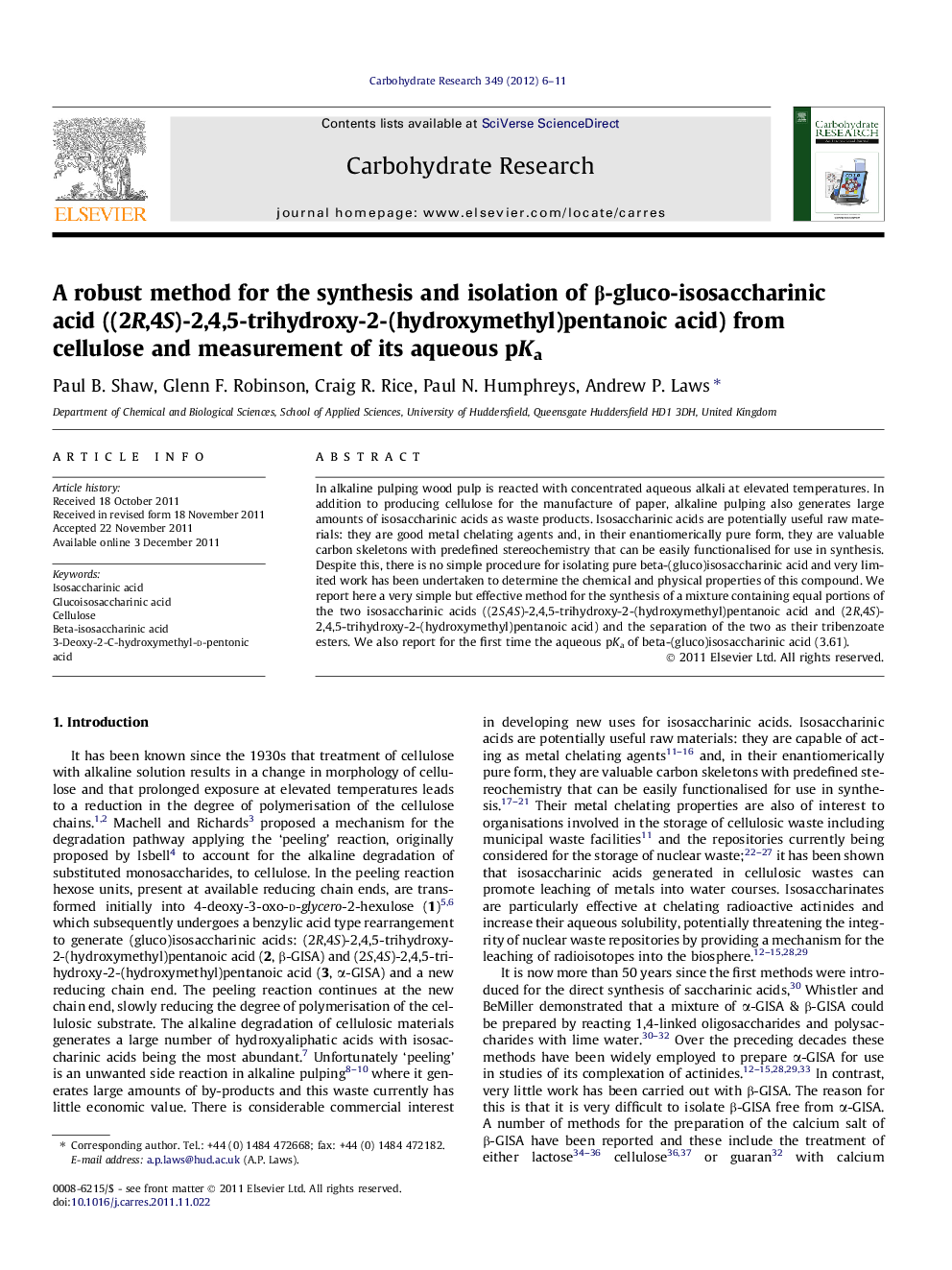| Article ID | Journal | Published Year | Pages | File Type |
|---|---|---|---|---|
| 1388282 | Carbohydrate Research | 2012 | 6 Pages |
In alkaline pulping wood pulp is reacted with concentrated aqueous alkali at elevated temperatures. In addition to producing cellulose for the manufacture of paper, alkaline pulping also generates large amounts of isosaccharinic acids as waste products. Isosaccharinic acids are potentially useful raw materials: they are good metal chelating agents and, in their enantiomerically pure form, they are valuable carbon skeletons with predefined stereochemistry that can be easily functionalised for use in synthesis. Despite this, there is no simple procedure for isolating pure beta-(gluco)isosaccharinic acid and very limited work has been undertaken to determine the chemical and physical properties of this compound. We report here a very simple but effective method for the synthesis of a mixture containing equal portions of the two isosaccharinic acids ((2S,4S)-2,4,5-trihydroxy-2-(hydroxymethyl)pentanoic acid and (2R,4S)-2,4,5-trihydroxy-2-(hydroxymethyl)pentanoic acid) and the separation of the two as their tribenzoate esters. We also report for the first time the aqueous pKa of beta-(gluco)isosaccharinic acid (3.61).
Graphical abstractFigure optionsDownload full-size imageDownload as PowerPoint slideHighlights► Gram scale synthesis of beta and alpha-glucoisosaccharinic acid (GISA) from cellulose. ► The use of microwave heating to enhance the rate of GISA production from cellulose. ► Preparation and isolation of the tribenzoate esters of alpha and beta-GISA lactones. ► X-ray structures of the tribenzoate esters of alpha and beta-GISA lactones. ► Measurement of the aqueous pKa of beta-glucoisosaccharinic acid.
